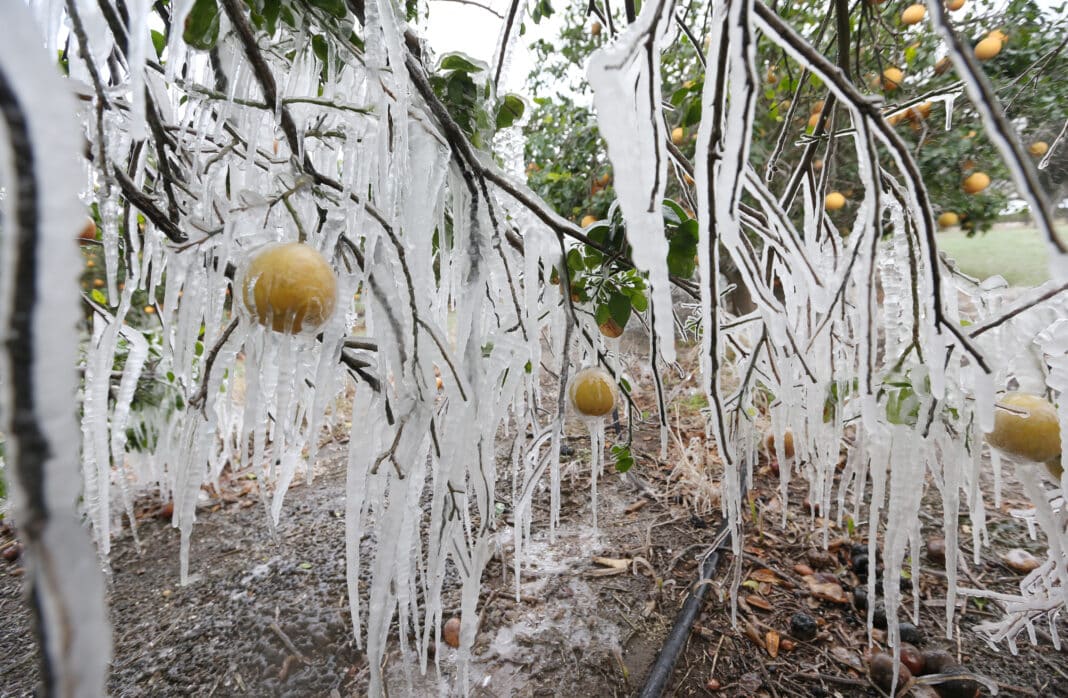Although the Rio Grande Valley experienced several freezes this winter, February’s arctic outbreak was the worst one to impact the Valley.
In fact, it even broke records dating back to after 1895. Nearly all of the Valley saw low temperatures in the teens and lower 20s, with ranch locations experiencing hard freezes for about six to 16 hours each day, according to a summary report provided by the National Weather Service in Brownsville.
“The combination of wind and ambient temperatures made it ‘feel like’ 0 to 10 degrees Fahrenheit above during the post-daybreak hours of 7 to 9 AM on the 15th — rivaling observed values during the Dec 22-24, 1989 period,” a portion of the summary states.
The winter storms left thousands of residents in freezing temperatures and without electricity for several hours and days. Residents scrambled to find vacancies at local hotels and motels that had backup generators.
Shelves at some grocery stores were left bare, as shoppers rushed to them buying candles, batteries, water, meats and non-perishable food items to get them through the days without power.
Power companies brought in crews from out of the area to help them repair and bring up power grids.
There were long lines at convenience stores selling gas with many running out of gasoline. There were also long lines at fast food restaurants and other eateries since homes were left without electricity and people were unable to cook at their homes.
The arctic outbreak in economic and crop production loss could exceed the early estimation of $2 billion in the RGV alone, the summary states. Final figures will not be available until later this year.
There’s an estimated $300 million in agricultural damage and $230 million in damage to citrus.
“The 2022 citrus crop was in some jeopardy, as at least 50 percent of the crop had begun the spring floral blooms that typically arrived in mid-February. These were wiped out in the freeze, ensuring no fruit,” the summary reads.
The arctic blast killed 3.8 million fish in the Laguna Madre, with nearly 3.5 million in the Lower Laguna Madre alone. According to the summary, this was the most since more than 14 million died across coastal Texas in the 1989 freeze.
Hundreds of volunteers rushed to the beaches at Boca Chica and South Padre Island to help more than seven thousand “stunned” sea turtles. Once the temperatures drop to 50 degrees or below, the turtles become lethargic and are unable to swim. Statewide, 10,000 stunned turtles were rescued.
The report states tens of thousands of semi-tropical plants were destroyed with the damage likely to be in the hundreds of millions of dollars.
Vegetation, trees and flower buds and blooms were also destroyed by the arctic blast. Light freezing rain and sleet coated trees and grass.
“When the value of damage to commercial agriculture and aquaculture, ornamental and nursery plants, and built infrastructure such as pipes, generators and flooded buildings, (is counted) the total direct damage count will be well over $1 billion, making it two such events (Hanna, July 2020) in less than a year,” the report states.




